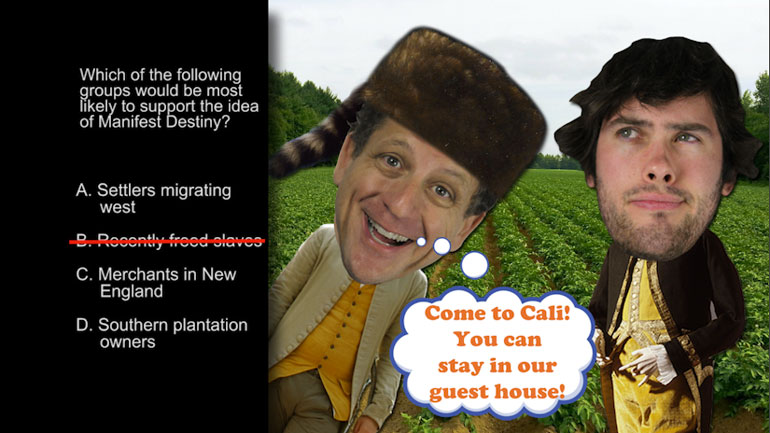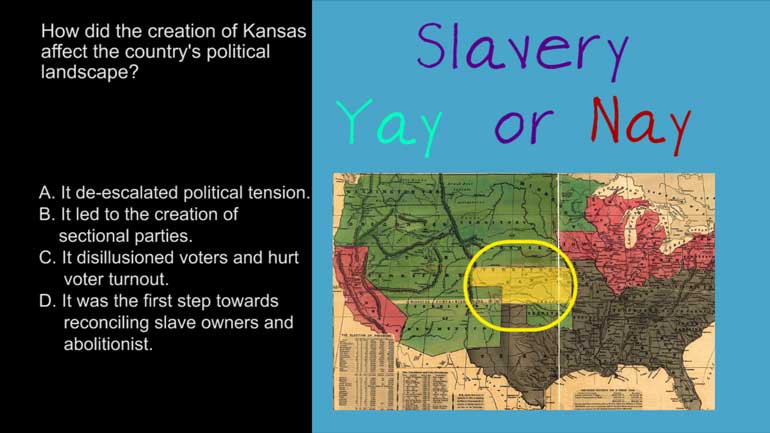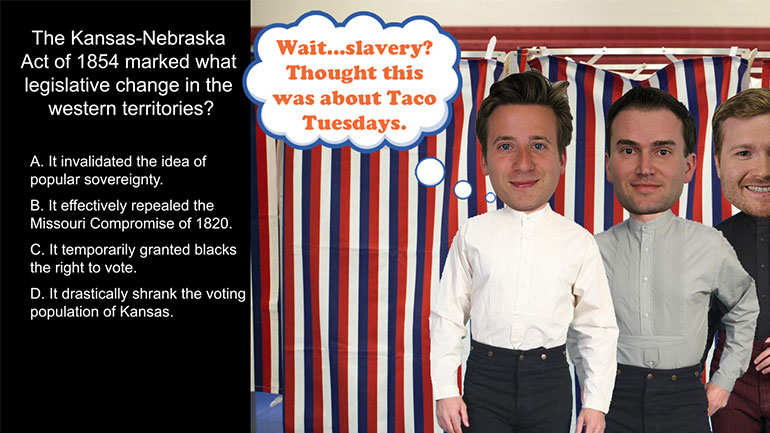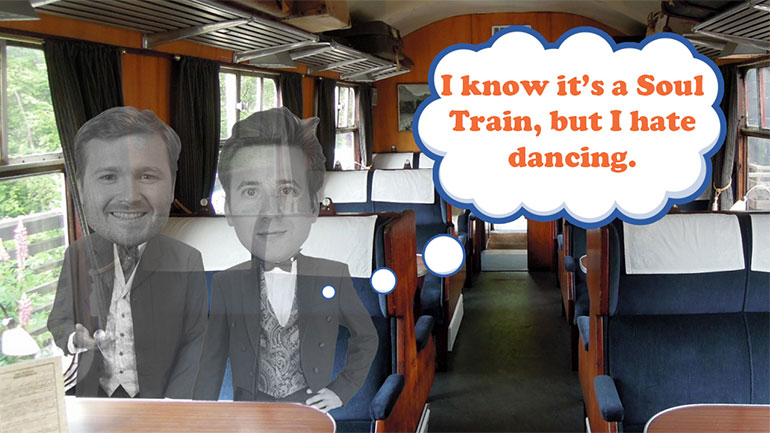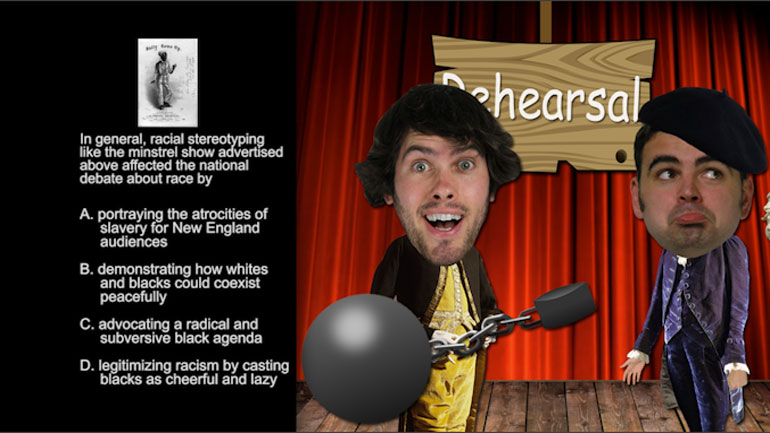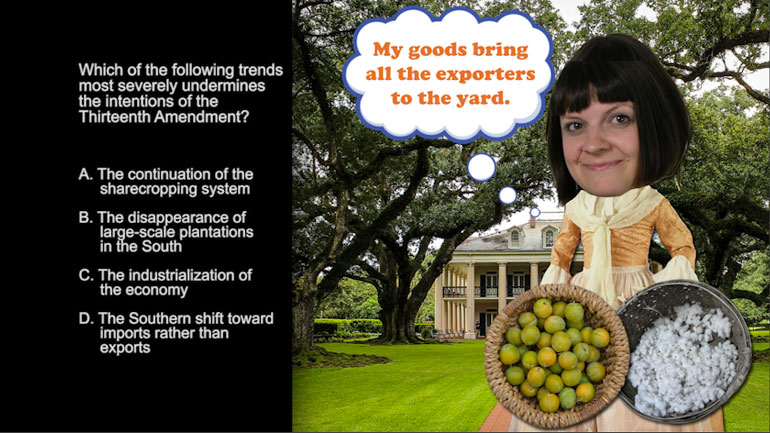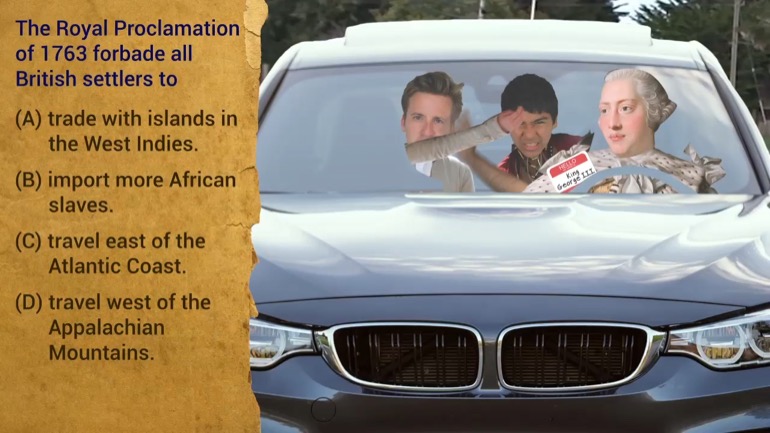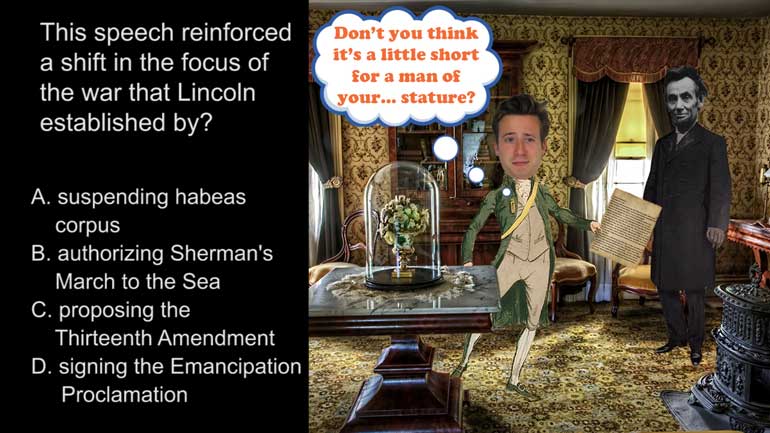ShmoopTube
Where Monty Python meets your 10th grade teacher.
Search Thousands of Shmoop Videos
Playlist U.S. History: 1848 – 1877 10 videos
AP U.S. History 1.1 Period 5: 1848-1877. Which of the following groups would be most likely to support the idea of Manifest Destiny?
AP U.S. History 1.2 Period 5: 1848-1877. Before the Civil War, the idea of Manifest Destiny was most complicated by which of the following issues?
AP U.S. History: Religion and Reform in Antebellum America Drill 1, Problem 2. How did the creation of Kansas affect the country's political l...
AP U.S. History 2.2 Period 5: 1848-1877 222 Views
Share It!
Description:
AP U.S. History 2.2 Period 5: 1848-1877. At the same time as minstrel shows were gaining popularity in the 1830s to 1850s, Catholic immigrants to the United States were...what?
Transcript
- 00:00
[ musical flourish ]
- 00:03
And here's your Shmoop du jour, brought to you by religious intolerance,
- 00:07
or intestinal discomfort following a church picnic.
- 00:11
Yeah. You'll get where we're going with that in a minute.
- 00:14
Okay. At the same time as minstrel shows
Full Transcript
- 00:17
were gaining popularity in the 1830s to 1850s,
- 00:21
Catholic immigrants to the United States were... what?
- 00:25
And here are your potential answers.
- 00:26
[ explosion ]
- 00:28
[ mumbles ]
- 00:30
All right.
- 00:31
Well, the popularity of minstrel shows came at the
- 00:34
same time as an increase in nativism,
- 00:37
which is the idea that non-natives
- 00:39
threaten the stability and integrity of a country.
- 00:42
In other words - if you look different from me, you must be my enemy.
- 00:46
Well, let's see which of these answers best describes
- 00:49
how that idea could've impacted Catholic immigrants.
- 00:52
In the 1830s to 1850s,
- 00:54
were Catholic immigrants to the U.S. A -
- 00:57
welcomed for their expertise in high-skilled jobs?
- 01:01
Well, actually, most of the immigrants were often low-skilled individuals
- 01:04
escaping oppression in Germany, Ireland, Britain, and Scandinavia.
- 01:07
Which means they also weren't entirely from Latin America.
- 01:11
So that eliminates A and D.
- 01:13
Could Catholic immigrants have B -
- 01:15
united with Protestants against non-white immigrants?
- 01:18
Well even though these groups were both part of the Christian church,
- 01:21
the most intense anti-Catholic sentiment
- 01:23
came from the Protestants in the United States.
- 01:26
So much for love and charity.
- 01:28
That means that Catholic immigrants were C -
- 01:30
accused of being slaves to the Pope and were discriminated against.
- 01:34
Even though America was originally
- 01:36
founded by individuals escaping religious persecution,
- 01:40
Catholic immigrants suffered severe discrimination
- 01:42
and violence when they arrived in this country.
- 01:44
So the answer is C. In fact,
- 01:46
native-born Americans went so far
- 01:48
as to accuse Catholic immigrants of being
- 01:51
loyal first and foremost to the Pope.
- 01:54
Talk about being a slave to your beliefs.
Related Videos
AP U.S. History Exam 2.45. The journey shown on the map was an example of...what?
AP U.S. History Exam 2.26. This speech reinforced a shift in the focus of the war that Lincoln established by...what?
What did the Spanish messengers bring with them to North America? Hint: you probably wouldn't be thrilled to get this for your next birthday.
AP U.S. History Diagnostic 24. How did the United States choose containment over the National Security Council Report in Latin America?
AP U.S. History Exam 2.25. In writing the Gettysburg Address, Lincoln was still working to win over Northern voters who believed that...what?
